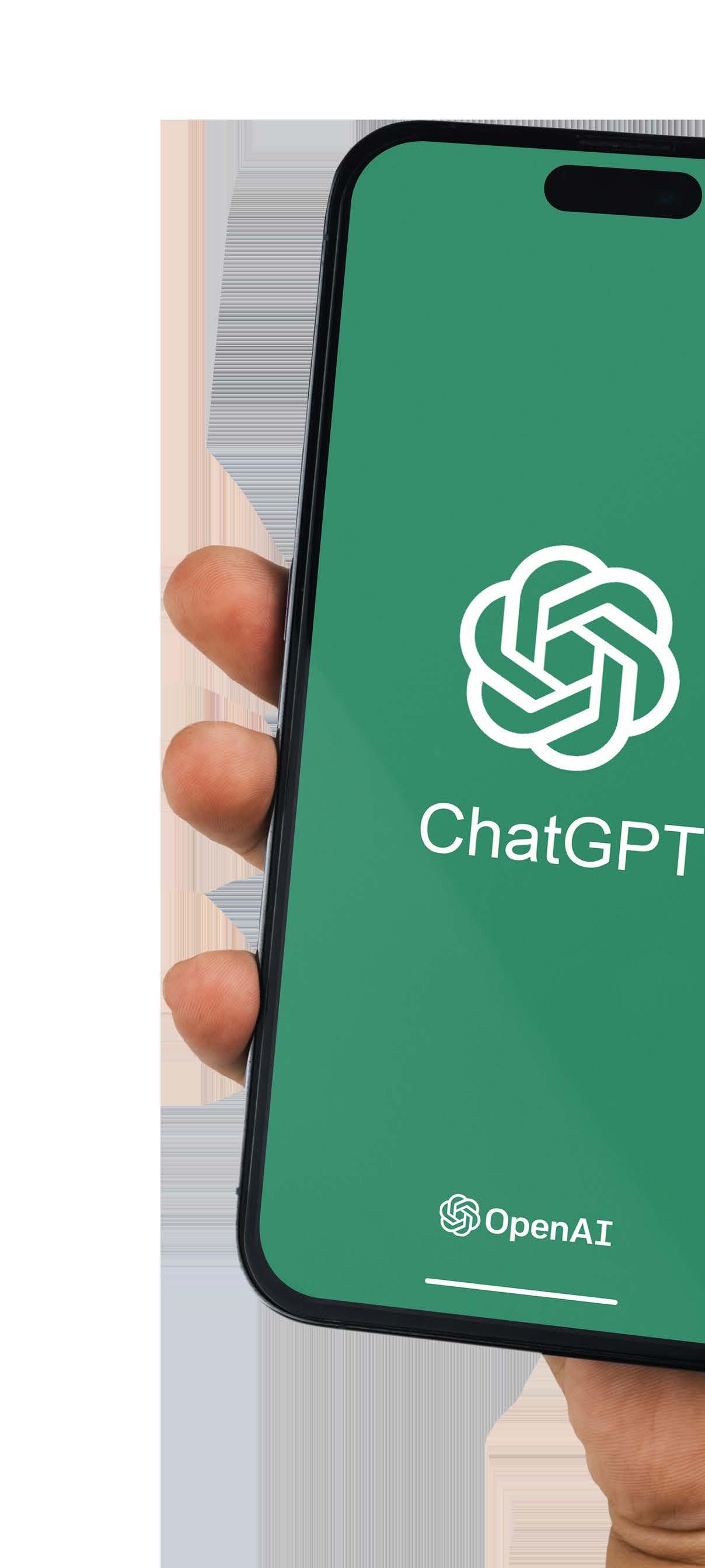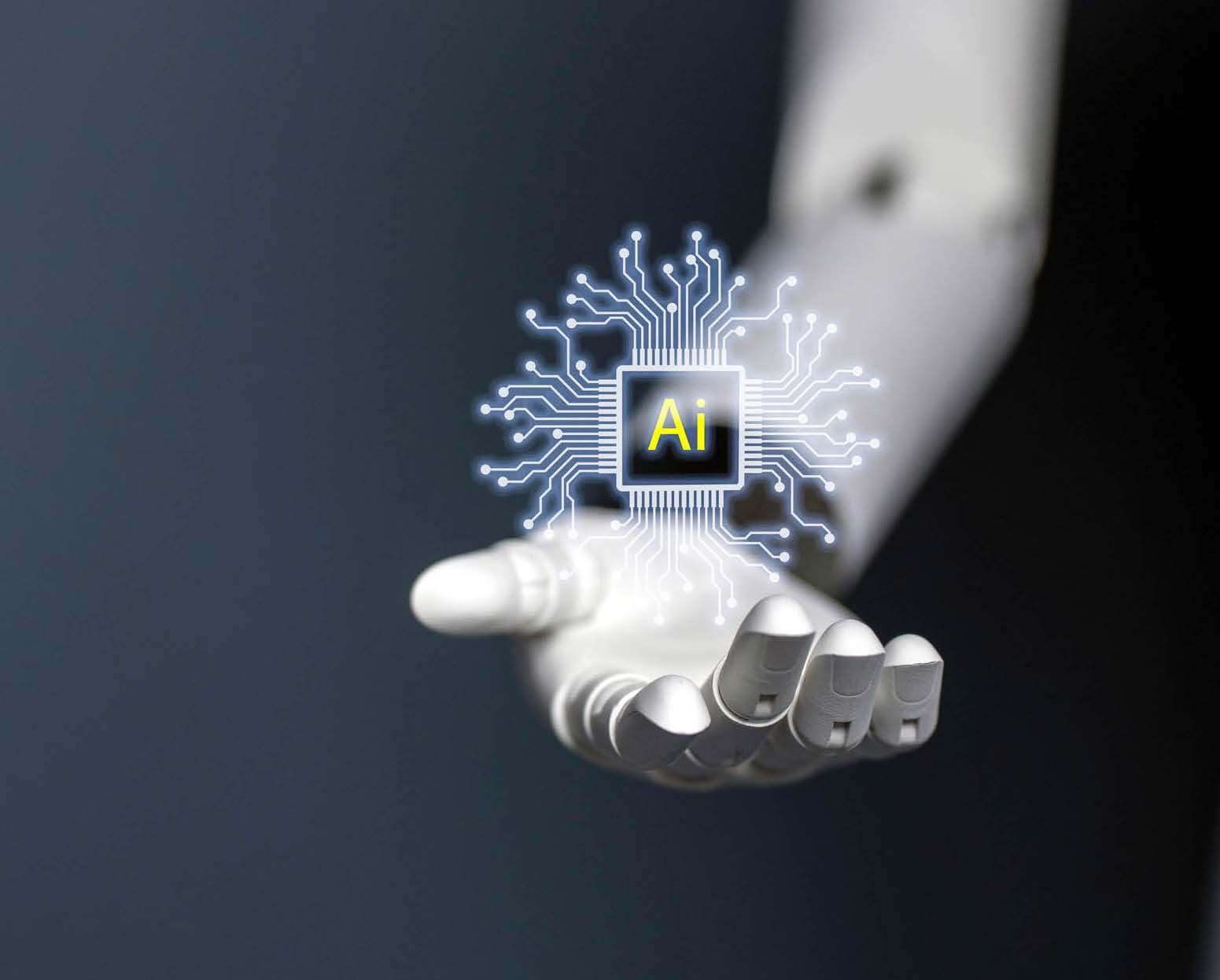
7 minute read
Is it really good to ChatGPT?
The latest artificial intelligence app, ChatGPT, has everyone asking what impact it will have on the sector and how many jobs it will replace.
CHATGPT has taken the world by storm and sparked a media frenzy as people predict how this new artificial intelligence (AI) chatbot, which racked up 100 million users in just eight weeks after its November launch, will change the world.
Advertisement
The AI app – full name Chat Generative Pre-trained Transformer – was developed by OpenAI and is programmed to give spookily humansounding answers to questions online in seconds.
Often called ‘generative AI models’, such apps are not limited to text; they can be used to generate images, videos and code and are constantly evolving. The more powerful image-based GPT-4 was launched on 14 March, while Google’s response to ChatGPT, Bard, became available in February.
In the built environment world, ChatGPT and its fellow generative AI models have the potential to affect construction, design, project management, building management and architecture, as well as being deployed by companies for content creation and presentations.
But will they be a force for good or do they herald the new dawn of a new era in which AI replaces people’s jobs and ultimately human intelligence?
Bill Gates hailed the creation of ChatGPT as being as fundamental innovation-wise as the microprocessor, the personal computer, the internet and the mobile phone.
But on 29 March, a report and statement appeared highlighting the potential downsides to such technology. In an open letter on the Future of Life Institute website, Elon Musk and 1,000 other technology leaders labelled AI tools, including ChatGPT, as “dangerous and unpredictable”, warning that they presented “profound risks to society and humanity”.
Noella Pio Kivlehan reports
Is this as impactful? I think this is far more impactful long term in terms of how it might replace and supplement everyday tasks that humans do today.”
Grill says one of the big upsides is that it can help with mundane tasks and ultimately free people up to do other things. He adds: “The impact of ChatGPT on companies in the built environment sector will really depend significantly on how it’s integrated and implemented into our existing systems. If we can utilise it as a task, we’re going to become more efficient. It goes all the way through the building lifecycle: how do we adjust the data and integrate it into what already exists today?”
Meanwhile, a Goldman Sachs report stated that 300 million jobs worldwide could be replaced by automation as a result of generative AI.
As ever with new technology, the built environment industry is adopting a cautious approach. Laurent Grill, a partner at JLL Spark, says most of the companies it is seeing, not necessarily AI firms, are “presenting a vision and a path that includes AI in it because you must”. He adds: “It’s more table stakes. Is this different than the dotcom boom, the change of the internet?
The technology could also change how landlords communicate with tenants. For instance, according to Grill, if a tenant had a clogged toilet, they could talk to their building management system, and the system could then automatically run it through the process of getting it to a plumber, who could respond and also talk to the generative AI app.
Time-saving benefits
Dan Drogman, chief executive at Smart Spaces, can already attest to the time saved. The proptech firm, whose smart building operating system is used at 22 Bishopsgate and Fifty Paddington, is using the chatbot to help write code.
“We are querying ChatGPT with questions on how to modify a functionality to check the code we’re writing,” says Drogman. “One of the challenges we have with our platform is making sure our UI – user interface – fits all different displays.
“It’s not writing the code for us; it’s giving us snippets that our team are using and it’s speeding up how quickly we can deploy new features and updates to our clients. It’s immediately beneficial to us. We’ll just deliver more work faster and more efficiently. Historically, we have wasted a lot of time reformatting code, Googling for these answers.”
He estimates a ChatGPT search can save one person two hours of Googling: “If you start adding that up every day, it’s going to be a few days a month. It’s powerful.”
Where ChatGPT will start to advance is when there are more application programming interfaces that allow users to upload analytics data, according to Drogman.
“If we can feed the data from our buildings and then query the data using natural language without writing code and database queries to extract the data, reporting will be ultra-efficient and easily accessed by anyone,” he explains.
“As soon as a plugin is available for GPT4, we will be able to feed that data directly into ChatGPT and then say ‘show me the best day of the week to book the office based on my team’s availability, show me the air quality, lighting scene and comfort level’. We can include whether we need to invest in new HVAC systems if usage has not met our energy commitments and it’ll build you the power point out of the data set.”
Currently, ChatGPT is only as good as the human prompts given to it, which has led global architecture practice Gensler to launch a Prompt Engineering course internally.
“We want to teach and work with our creatives on how to use and craft the prompts,” says Joseph Joseph, a principal at Gensler and global director of the firm’s Design Technology Studio. “It’s a powerful component to how we ingest important building data. This could be usability, trends of spaces or the swing of office to residential or lifestyle to work. We are able to leverage the power of AI to look at our
Andrew Knight, global data and tech lead at RICS, says there are question marks around the reliance placed on AI tools and how they are used, whether they are generating code, text or images.
“We would [need] to be clear to our clients we are using generative technology to produce some of our work output and what there might be in terms of issues of IP patterns, reliance upon that information and this being used for a serious commercial purpose,” he explains. “These tools are very impressive, but they do have weaknesses in sometimes not being correct.”
Simpson agrees, saying: “It needs to be approached with care.” data to see how we can continue to bring value to our clients in a way that you historically couldn’t see.”
Enhanced content creation
Colliers is also using the chatbot, but in a different way. It is deploying the technology to “enhance content creation” and to suggest “punchy headlines for press releases and blogs”, says Suzy Simpson, head of content, communications and PR at Colliers. It’s a valuable time-saver, she says, adding that it can quickly summarise the content that her team has produced in collaboration with Colliers’ market experts and turn it into social posts.
“It can even act as an extension to the team when brainstorming new projects,” she says. “It’s a great starting point for new inspiration on campaign ideas or if you want to experiment with the messaging.”
The sector is acutely aware of the ChatGPT negatives, however.
The apps can quickly produce polished content that to an untrained eye can be very convincing, says Simpson. “The content always needs looking at with a critical eye, and most of the time will need tweaking or refining to suit the audience or brief in question,” she adds.
Joseph highlights confidentiality, particularly around writing a letter or the beginning of a technical description of a project featuring a client’s name, project location and the industry it is in.
He says: “Prompt engineering as it relates to getting the best value of these generative platforms, and maintaining ethics, confidentiality and secrecy around our intellectual property, are things we are thinking about. As an industry and as humans, [we] have to pay close attention to the ethics and the unconscious bias of these platforms and put that filter on it.”
Opinions are split about whether ChatGPT, and generative AI overall, will replace people. Drogman says certain jobs are at risk: “It’s going to be in administrative tasks, for those creating presentations on data that already exist. Now the person asking for the report can build the report.”


However, he adds, those who just use ChatGPT alone and do not add any human creativity and flare “will fall behind”.
Knight takes a slightly different view. “These tools will be complementary in the creative process, or to the other kinds of software tools and other tools people use to do their job… Roles will evolve,” he says.
The open letter signed by Musk et al called for a pause on training of AI systems more powerful that GPT-4 for six months so the industry could assess the risk they pose. Whether this will happen is not yet known and technology is changing almost daily. In one way, this benefits the built environment industry.

As AI learns more about the overall vertical market context - for example specialist built environment market knowledge – the quality of its responses will keep improving, says Noam Naveh, co-founder of stylib.com, an AI-driven material search platform for architects and interior designers.
“This has radical implications for our sector. Soon, we expect these models will be adapted to create floorplans, architectural details, policy documents and more – all in a level of detail and proficiency that is comparable to an industry professional with many years of experience.”
Knight remains optimistic about the future. “This generative wave we have seen over the last few months is incredibly exciting and interesting and indicates another generation of AI that’s producing some really interesting output.”

He puts himself in the “glass half full” camp as far as the impact on people goes. As AI tools evolve, Knight says, “we will realise their limitations, their power, but also that they will help us do our job”. He adds: “They won’t necessarily replace jobs in the way people think, and particularly the creative, advisory and consulting element, where you still have people working with people.”
With such AI tools to hand, the temptation to want more, better and faster will only increase. We’re also very much in the honeymoon period at the moment. The novelty has yet to wear off. Time will tell what AI means ethically, morally, for people’s jobs… and for humanity.











